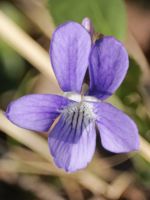Mon-Fri 9am - 5pm Mountain time
Purple Prairie Clover vs Early Blue Violet
Dalea purpurea
Viola adunca
NOT AVAILABLE THIS SEASON - MIGHT RETURN
NOT AVAILABLE THIS SEASON - MIGHT RETURN
Purple Prairie Clover is a native perennial wildflower known for its striking purple blooms. The flower heads grow as dense spikes on tall stems, with each flower head containing many tiny blossoms. Blooming for 4–6 weeks in the summer, it attracts a variety of pollinators, including bees and butterflies.
The high protein content of the Purple Prairie Clover makes it excellent forage for wildlife and birds like to feed on its seeds. As a nitrogen-fixing plant, it enriches the soil, improving fertility and benefiting nearby vegetation. These ecological contributions make it a great choice for pollinator gardens, prairie & rangeland restoration, naturalization, and re-vegetation efforts.
This drought and heat-tolerant plant thrives in various soil conditions, including rocky soil, making it remarkably easy to grow in challenging environments.
Early Blue Violet is a low-growing native perennial wildflower valued for its striking early-spring blooms. The flowers range in color from vibrant blue to deep violet, often marked with pale highlights and fine white hairs. They provide an important early nectar source for pollinators and serve as a host plant for several fritillary butterfly species.
It spreads by both seed and rhizomes, gradually forming small colonies. Its dark green, heart-shaped leaves add ornamental appeal, and the plant shows some resistance to deer browsing. Early Blue Violet is well-suited to naturalization projects and pollinator-friendly gardens, and has also been used in coastal butterfly habitat restoration in the Pacific Northwest.
Purple Prairie Clover Quick Facts
Early Blue Violet Quick Facts
Toxicity: rhizomes, fruit, seed poisonous to humans

